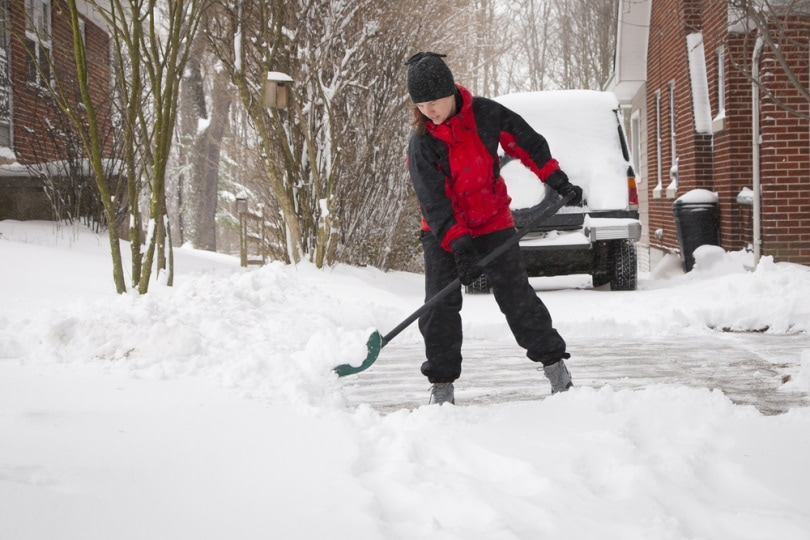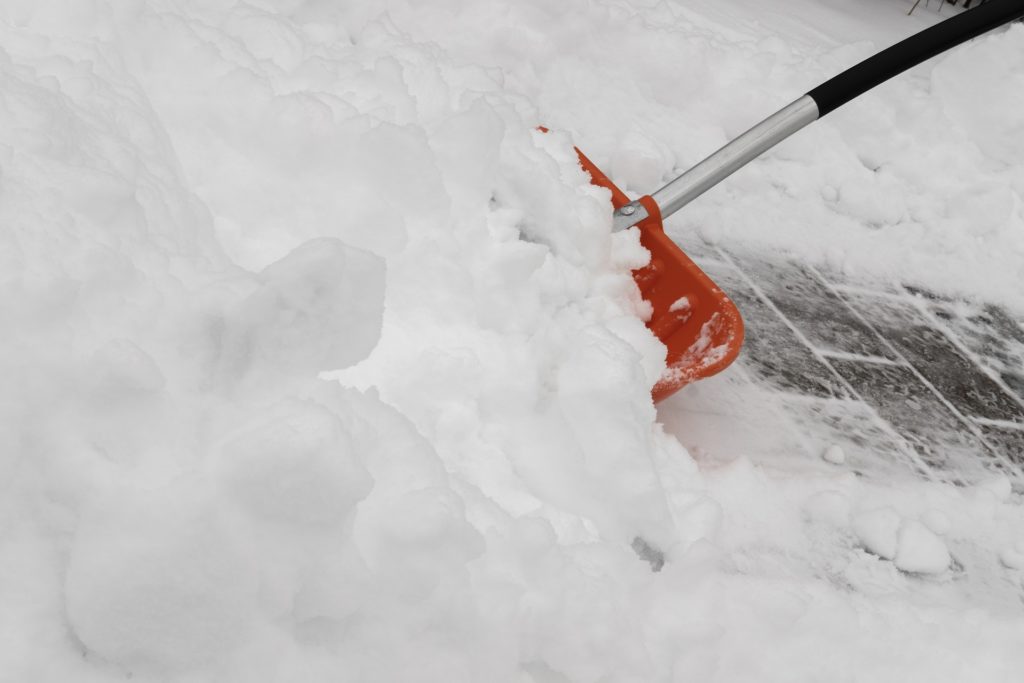How to Shovel Snow: 6 Tips & Proper Techniques
-
Codee Chessher
- Last updated:

Little else is worse than waking on a cold winter’s morning and discovering that snow has covered everything outside. As if the bitter cold wasn’t enough, now you have to spend a significant portion of your day outside in it while shoveling snow off your car and driveway.
Before you pull out the snow shovel or snow blower, we’ve compiled some handy tips that will help you shovel snow and clear your driveway in the safest and easiest way possible. Hopefully, by the end of this article, you’ll be shoveling snow faster than you ever have before.
What Is Snow Shoveling?
When heavy snowfall occurs, it can dump feet of snow all over your home and property. Snow shoveling is the art of clearing your driveway and other areas of snow and ice. It can seem simple and physically demanding, but it actually has a number of health benefits when done correctly. There are many types of snow shovels, each with its unique advantages.
While there certainly are some people who enjoy shoveling snow, there are an equal amount of people who don’t–maybe more. It can be challenging at first, but you’ll get the hang of it soon enough.
Benefits Of Snow Shoveling

As it turns out, clearing your driveway has a number of health benefits, as long as you do it correctly. If you stop to consider what body parts are used, snow shoveling uses most of the major muscle groups: your back, core, arms, and legs.
The repetitive twisting motion used in snow shoveling works out other muscles commonly neglected in exercise, like the obliques and transverse abdominals.
- Using proper posture when snow shoveling helps to train your back, which reduces strain
- Raising your metabolic rate, which improves energy levels and weight loss
- Torching about 200 calories per 30 minutes
- Improving heart health through aerobic exercise
As with any exercise or physical work, if you strain yourself, you lose many of these benefits and risk adverse effects on your health. Always use proper technique when snow shoveling, which we’ll also be going over later.
Different Types of Snow Shovels

There are numerous types of snow shovels, each specifically designed to clear snow from areas around your home. All snow shovels have a handle and a scoop, though the exact configuration will vary depending on the type of shovel. Some appear indistinguishable from a regular shovel, while others look like a shovel-rake hybrid. Let’s take a look at some of the most common types of snow shovels.
- Standard shovels are the most common type of snow shovel and typically appear like a normal shovel with a plastic scoop. Shovels with metal blades are also common but tend to do more damage to your driveway and surroundings.
- Snow push shovels have a wide, sharp rectangular scoop used to push snow out of the way. Rather than repeatedly bending and lifting, you simply clear a path all at once.
- Telescopic shovels have telescoping handles that allow you to adjust the handle’s length. The handle can be shortened for easy storage or lengthened to reach hard-to-access areas and reduce back strain.
- Snow scoops have much larger scoops for picking up more snow at one time. The extra snow can be very heavy, so these are most useful if you’re confident in your physical strength. Avoid these if you’re seeking the easiest method available.
- Snow sleigh shovels look like mini sleighs, hence the name. Using leg power, you can use this sleigh to quickly clear a path through the snow. If you don’t have a lot of leg power, though, this shovel quickly loses effectiveness.
There are other types of shovels, each with its unique advantages and disadvantages. Shop around to find one that fits your lifestyle and strengths.
The 6 Tips on How to Shovel Snow
Done improperly, you can actually hurt yourself snow shoveling, which is why proper technique is vital. For your convenience, we’ve listed all the most common techniques you can employ to keep yourself healthy when clearing your driveway.
1. Warm Up Before You Start
Always warm up before beginning by doing some light stretches focused on your back, core, and legs. Skipping this step increases the chance of straining muscles. Also, lightly stretching gets your heart ready to work and opens the blood vessels, which makes it easier to breathe while working.
2. Bundle Up
Dressing in warm, loose layers will help your body regulate its temperature. Preferably, you want to dress in water-repellant, insulating layers that help your body stay warm. Clothing that’s too tight will restrict your blood vessels and increase the strain on your heart, plus make breathing more difficult. For better traction, use snow boots or slip-resistant and water-resistant shoes.
3. Hydrate

Cold weather makes you less thirsty than you should be, so it’s important to drink ample water. Dehydration cripples your body’s ability to regulate its temperature, increases blood pressure, and strains your heart. Do yourself a favor and drink some water before you go out to clear the snow. If you’re ever feeling unwell while shoveling, be sure to take a break until you’re feeling up for it.
4. Proper Posture Is Key
You may have heard to “lift with your legs, not your back,” but there’s a bit more to it. First, you should keep your back straight at all times to reduce the chances of hurting it. To maneuver, lead with your hips and keep your chest puffed out. Then, bend your knees to lower yourself, rising the same way. Keep your feet in a wider stance to help keep your balance.
5. Split the Work Up
It’s better to shovel multiple small piles of snow than one deep and packed pile of snow. Instead of trying to clear a deep section all at one, make multiple shallow passes with your shovel. It’s always better to do more light, repetitive work than to do a strenuous task all at once.

6. After You Finish Shoveling
Once you finish shoveling, you might find it frustrating that the clean concrete gets covered with drifting snow and ice in such a short period of time. One way to combat this is to put down ice salt. Ice salt works by making it more difficult for solid ice crystals to form from water. Thus, keeping your driveway clear and free of ice for longer. This is worth the extra time and money if you prefer not to slip and fall every time you walk outside.
Conclusion
Snow is pretty to look at, but it’s a huge pain to repeatedly clear every time it falls. To keep yourself healthy and your driveway clear, make use of the tips in this article. Work smarter, not harder!
Featured Image Credit: pryzmat, Shutterstock
Contents

